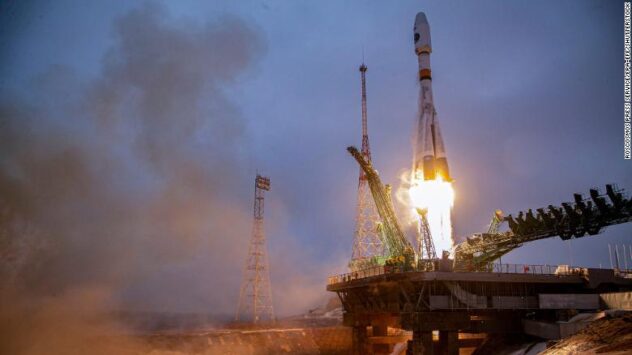
© ROSCOSMOS PRESS SERVICE HANDOUT/EPA-EFE/Shutterstock via CNN
Pre-reading questions:
I will read each question. Then, please answer them.
- What environmental problem does your country face?
- Is recycling important to help save our environment? Why or why not?
Vocabulary:
I will read the words, meanings, and sample sentences. Then, repeat after me.
- satellite /SAT-l-ahyt/
- orbit /AWR-bit/
- navigate /NAV-i-geyt/
- continuous /kuhn-TIN-yoo-uhs/
- global /GLOH-buhl/
[noun] – a device sent up into space to travel around the earth, used for collecting information or communicating by radio, television, etc.
The latest reports will be broadcasted via satellite.
[noun] – the curved path through which objects in space move around a planet or star
The latest space shuttle launched is now in orbit.
[verb] – to direct the way that a ship, aircraft, etc. will travel, or to find a direction
We cannot navigate properly if we don’t have a map.
[adjective] – without a pause or interruption
The rain has been continuous since yesterday night.
[adjective] – relating to the whole world
Global warming is a serious problem we cannot ignore.
Article reading:
Please read the whole article. Then, I will check your pronunciation and intonation.
Russia launched Artika-M last Sunday, February 28, to monitor the climate and environment in the Arctic Ocean. Kazakhstan’s Soyuz rocket from its Baikonur launchpad sent out the satellite after successfully hitting its assigned orbit, according to a tweet by Russia’s Roscosmos space agency head Dmitry Rogozin. Artika-M is expected to cover the Arctic by navigating above the high northern altitudes and take photos every 15-20 minutes. As part of the Cospas-Sarsat international satellite-based research and rescue network, the satellite is also capable of sending distress signals in remote locations.
Russia intends to send a second satellite in 2023. According to Roscosmos, the satellites will conduct continuous surveillance of the Arctic Ocean. The Arctic has warmed more than 50% faster than the global average over the past 30 years. “As more activity takes place in the Arctic and as it moves into higher latitudes, improving weather and ice forecasting abilities is crucial,” said geographer Mia Bennette of the University of Hong Kong.
Russia intends to send a second satellite in 2023. According to Roscosmos, the satellites will conduct continuous surveillance of the Arctic Ocean. The Arctic has warmed more than 50% faster than the global average over the past 30 years. “As more activity takes place in the Arctic and as it moves into higher latitudes, improving weather and ice forecasting abilities is crucial,” said geographer Mia Bennette of the University of Hong Kong.
Comprehension Questions:
I will read each question. Then, please answer them based on the article.
- According to the article, where will Artika-M navigate?
- From where was Artika-M launched?
- What can the satellite do as part of the international satellite-based research and rescue program?
- What did Bennette say about improving weather and ice forecasting?
- How many satellites will monitor the Arctic Ocean by 2023?
Discussion Questions:
I will read each question. Then, please answer them.
- What is your opinion about Russia’s initiative to monitor the Arctic Ocean?
- Do you think Russia will successfully get important information about the Arctic’s climate via satellite? Why or why not?
- What other serious environmental problems does our world have?
- What rules and regulations do your country have to help lessen global warming?
- In your opinion, will our climate and environment keep changing or will they return to normal? Please tell me more about it.